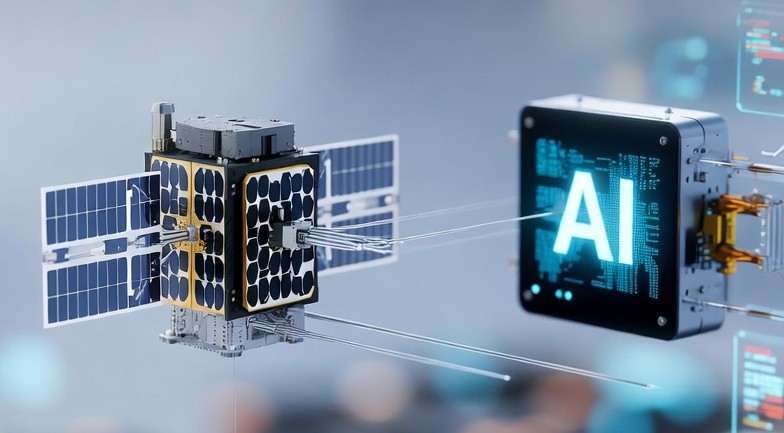The Internet of Things is expanding at a breathtaking pace. By 2025, the global IoT market is projected to hit $1.6 trillion, fuelled by the need for always-on sensing, better automation, and smarter decision-making across industries. Yet as billions of devices come online, a new wave of innovation is reshaping what’s possible: on-device AI.
For years, IoT has been defined by sensors that collected data and sent it somewhere else — usually a cloud service — to be analysed. But as use cases move into more remote, bandwidth-limited and energy-constrained environments, the industry is undergoing a fundamental shift. Devices are no longer simply sensing; they’re thinking. They are detecting, classifying, predicting and deciding — all on their own silicon.

This shift is powering a global surge in demand for efficient connectivity, particularly low-power options such as direct-to-satellite IoT. And it’s opening up an entirely new frontier for those operating in remote agriculture, logistics, environmental monitoring and planetary-scale sensing.
Why On-Device AI?
Running AI algorithms directly on the device — often called edge AI or on-device AI — unlocks capabilities that cloud-based approaches simply cannot match in low-connectivity environments.
On-device AI delivers:
- Massive data reduction: Only actionable insights or alerts need transmitting — ideal for satellite IoT where payload budget matters.
- Longer battery life: Careful model optimisation and dedicated low-power silicon drastically reduce energy consumption.
These advantages are now converging with the needs of agriculture, logistics, environmental monitoring and industrial automation — domains where satellite operators operate daily.
A Market Hitting Its Inflection Point
The on-device AI ecosystem has quietly been maturing for a decade. Traditional use cases — computer vision, anomaly detection, machine-learning-based pattern recognition — have seen slow and steady adoption, growing at around 10 percent annually.
But something changed in the past two years.
Generative AI, robotics and autonomous systems have ushered in a new appetite for high-performance AI at ultra-low power. And this has pushed the entire ecosystem into a new growth phase.
According to Berg Insight, on-device AI revenues reached $10.1 billion in 2024 — up 22% from 2023 — and are expected to climb to $30.6 billion by 2029, a 25% CAGR. These figures exclude smartphones and PCs; this is purely IoT-class embedded intelligence.
Supporting this growth is an increasingly diverse hardware landscape: AI SoCs, AI accelerators, microcontroller-level neural processors, and complete on-device AI platforms. They enable intelligence everywhere from soil-moisture probes to industrial motors, wearables to vehicle subsystems.
At the same time, the satellite IoT market is racing ahead with its own momentum, forecast to grow at 20% CAGR from 2024 to 2025. And battery-powered tracking alone is set for 25% demand growth next year. Both trends reinforce a simple truth: the smarter devices become, the more they need resilient, low-cost, low-power global connectivity.
On-Device AI + Satellite IoT: A Natural Pairing
In remote fields, forests, oceans and deserts — the places Lacuna Space focuses on — cloud connectivity is not always available. Data can’t always wait. Farmers can’t rely on intermittent coverage to detect disease outbreaks. Wildlife monitoring systems can’t afford to stream raw acoustic data. Logistics firms can’t wake a device from deep sleep every time a sensor twitches.
This is where the convergence of on-device AI and direct-to-satellite IoT becomes transformative.
On-device AI filters the data. Satellite IoT delivers it anywhere.
A soil sensor that performs its own anomaly detection needs to send only a 16-byte alert.
A livestock collar that classifies animal behaviour on-device can run for years on a battery.
A remote weather station can compress thousands of datapoints into actionable insights before transmitting.
This is the future satellite operators are helping to shape: intelligent devices that operate with extraordinary power efficiency, rely on minimal bandwidth, and stay connected even at the edge of the world.
A New Generation of Possibilities
As the on-device AI market accelerates, the downstream opportunities for global IoT networks expand in parallel. Devices are becoming capable not only of reporting the world’s conditions, but understanding them. And as these devices proliferate across remote agriculture, environmental monitoring, maritime logistics and national infrastructure, low-power satellite IoT becomes the connective tissue holding the system together.
The next trillion-sensor wave will not be defined by raw data streaming to the cloud. It will be defined by devices that think first — and connect second.